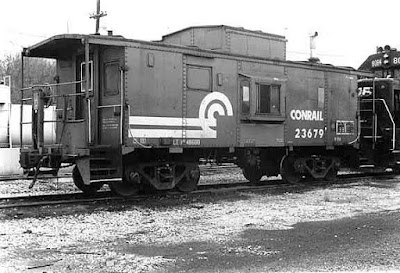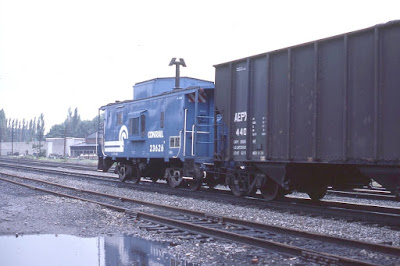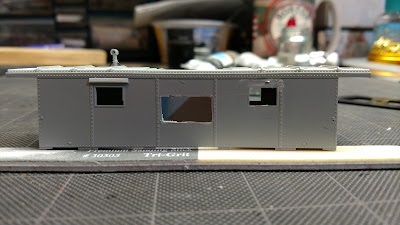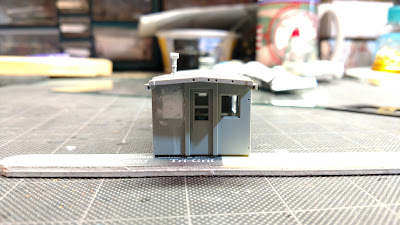A friend asked me to paint some FA's for him. He wants the models in the New Haven's Albert (or Trustee) paint scheme, it is the simplest cab unit paint scheme the New Haven used, only red/orange and black paints are needed, no long stripes or crazy three color geometric shapes. The models are Walthers' train line FA's. They are originally from Train Miniature that Walthers bought back in the late 1980's. The shells are very much a 1980's (or earlier) style model with molded on grab irons and such, but the dimensions are close and have a nice look to them.
The one issue I have with them, particularly when painting the Alpert scheme, is the placement of the number boards, they are too low on the nose of the model. The Albert scheme queues off of the number boards and the low placement causes the red to be too low on the nose and the red that goes up and around the headlight casting to be elongated. Here is comparison of the Walthers Trainline with a Proto 2000 model.
 |
| The Trainline model on the left, a Proto 2000 model on the right. |
The good news is the number boards are separate parts (one the very few on these models), so moving them is very simple. Each board has a pin, on on the front edge that holds it to the shell. I use a new, sharp #11 x-acto blade and cut the pin and pry the number board off. Leaving the pin in the shell helps fill the hole. I use a sand down the area to remove any traces of glue and use some body putty to fill any low spots. I then glue the number board to the correct higher location.
 |
| Here is the shell with the corrected number board. |
The fix is quicker then reading this post. I would not recommend it for painted models, but i you are going to paint one, make the fix. I you are just starting out on upgrading and painting models, it is a nice little project that can truly make the finished paint job look much better.


























